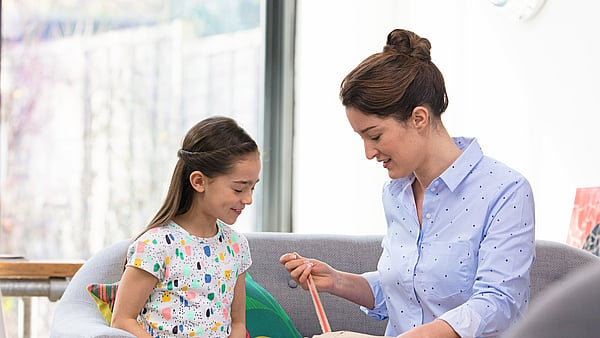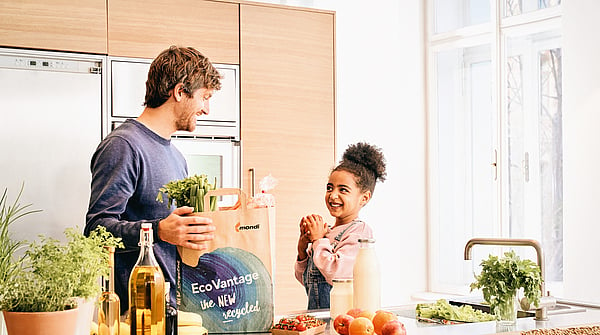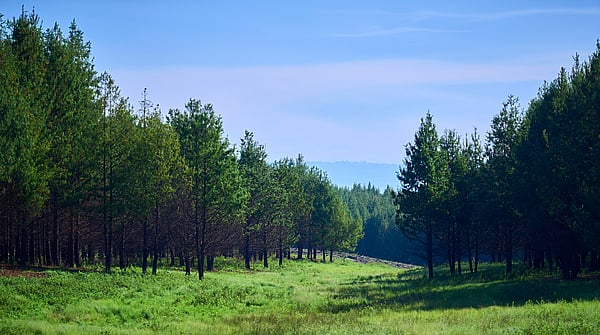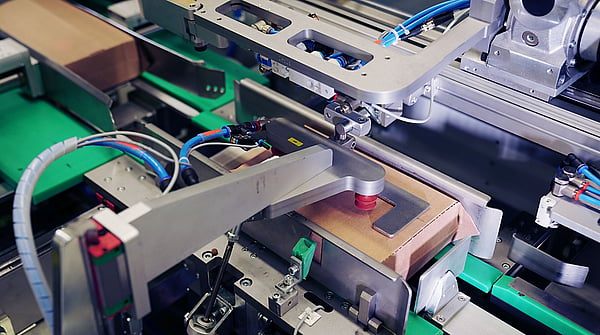Tackling a World of Waste Through Circular Driven Solutions

Fabio Peyer, Head of Sustainability for Flexible Packaging, discusses the urgent need for more sustainable solutions in order to eliminate the world's waste problems.
The world has a waste problem. Each year, 2.01 billion tonnes of municipal solid waste are generated globally, and this number may reach as high as 3.4 billion tonnes by 2050 (World Bank). It’s clear that we urgently need more sustainable solutions if we want to reduce and eliminate waste.
A circular economy is a system where materials never become waste and nature is regenerated (Ellen MacArthur Foundation). This means that we create a closed loop where materials are continuously circulated through processes such as recycling. This allows these resources to be maintained in the economy for as long as possible, while avoiding or minimising the generation of waste and contributing to sustainable consumption and production practices (UNEP).
After over half a century leading development in paper and packaging, it is clear that there is no one-size-fits-all solution to sustainable packaging. But one thing is certain - if packaging has not been designed with sustainability and circularity in mind it can have numerous knock-on effects, including transport emissions, waste and pollution.
Designing packaging for a circular economy is no easy task, but Mondi has the necessary expertise within the business to face some of its biggest challenges. And one of our most important learnings is the recognition that both plastic and paper packaging play a vital part in achieving a circular economy.
Circularity today
According to Circle Economy’s Circularity Gap Report 2023, the world is only 7.2% circular. This means that only 7.2% of the 100 billion tonnes of virgin materials used each year are reused or properly recycled after first use. When compared to 2018’s figure of 9.1%, we can see that global circularity is decreasing.
It’s undeniable that regulations and policies have a central role to play in facilitating the transition of industries towards a circular model. A great example of this is the EU’s Circular Economy Action Plan, one of the main building blocks of the European Green Deal which aims to introduce a new agenda for sustainable growth with implications for the paper and packaging industries as well as many others.
But while regulation is a critical factor, industry action is what will truly bring the circular economy to life, through both innovation and cross-party collaboration.
Innovation is naturally a significant driver of efforts to transition to a circular economy. Every day, our industry sees new technologies and advancements revolutionising packaging materials, its design and use, enabling more sustainable practices that minimise waste while meeting packaging’s basic purpose and functionality.
So, what does circularity look like for us at Mondi?
The right solution for the application
There is no single route towards sustainability – it is about finding the best solutions for our customers, our products and the planet. It’s about designing packaging with the full lifecycle and purpose in mind. Taking a case-by-case approach. At Mondi, we collaborate with our customers and partners across the value chain, such as machinery suppliers, to fully understand the applications and performance needs. To create more sustainable packaging, we believe in using the material that delivers the most value for the application – each material offers unique properties sustainability benefits, and sometimes materials need to be used together to achieve the optimum outcome.
This approach also helps our customers, who share our commitment to a circular economy, meet their sustainability goals. After all, a circular economy can only be achieved through collaboration across the value chain.
Paper lends itself to circular economy models. Made primarily from renewable sources – wood pulp – paper has one of the highest recycling rates globally, achieving 71.4% in Europe in 2021 (CEPI) – and paper-based packaging at even higher rates at around 82%. We source our fibre responsibly, using a natural, renewable resource (wood pulp), that is easily recycled, helping minimise waste generation and promoting sustainable forestry for regeneration.
But sometimes, paper can’t do it all – this is where plastic packaging and hybrid solutions come in. The unique barrier properties of plastic help to protect goods in a way that paper can’t. For example, plastic packaging provides a barrier of protection from moisture or oxygen that can extend the shelf life of perishable products for longer, helping to avoid food waste. These properties can’t be easily replicated by other packaging types.
And whilst it is true that plastic films are not reaching high recycling rates quite yet, we believe this will rapidly change in the future driven by the adoption of mono-material plastics and advancements in plastic recycling. Just one example of this is our collaboration with Fressnapf, Europe’s market leader for pet supplies, to roll out recyclable mono-material packaging for its pet food range. The pet food bags and pouches are certified recyclable with other mono-polyethylene (PE) films using various existing recycling streams across Europe and offer strong barrier properties against moisture, fat and odour, essential for this type of product. This is just one example of how our products are advancing the journey towards a circular economy – creating a solution that is fit-for-purpose and recyclable.
Mondi’s approach
We use a customer-centric approach to find the best solutions that are sustainable by design and meet market expectations for performance. We utilise tools such as life cycle assessments to look at the bigger picture and acknowledge the pros and cons of all possible solutions. Every day we see how collaboration is essential in bringing together different stages of a product or understanding a material’s lifecycle, as well as helping us find the best option both for the planet, and for our customers. As we’ve said before, designing packaging for a circular economy is no easy task, but with the commitment and expertise of our team we feel in a great position to design the best sustainable solutions for our customers, helping them tackle the global waste challenge.


